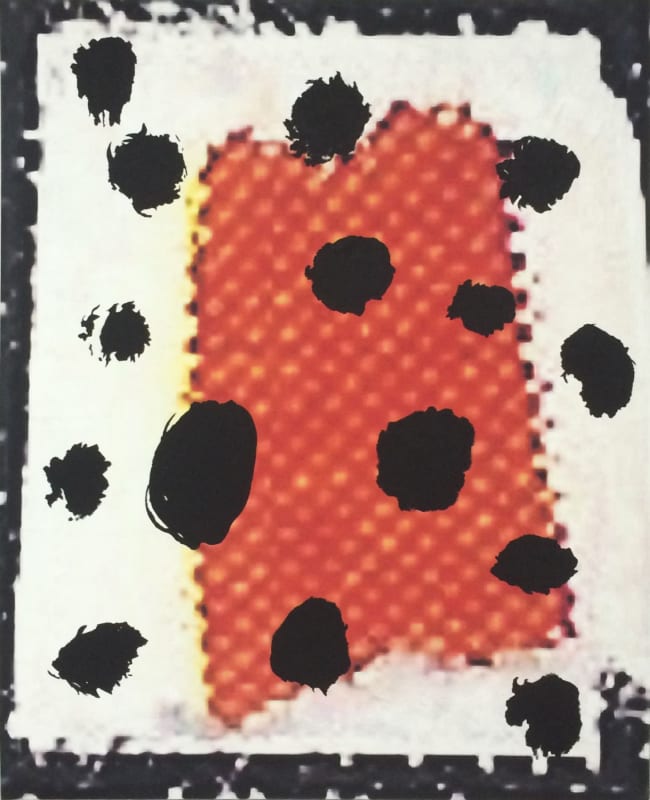Nathalie Karg is pleased to present a series of new works by Swiss artists Linus Bill and Adrien Horni. Their first showing with the gallery, this exhibition finds the pair continuing their ongoing explorations of process, form, and presentational strategy.
Central to Bill and Horni’s collaboration is the denial of presumed hierarchies: in their blending of mediums and methods of display, the pair rejects prescribed divisions in favor of unfettered plurality, their wide-ranging output of paintings, sculptures, prints and publications each mutually derived and equally vital. As much a functional strategy as theoretical stance, this willful resistance to conventions (both imposed and ingrained) compels the artists to engage their work on its own terms, working closely together to find for each given piece its own particular solution. Adaptive but disciplined, fluid but decisive, this approach has allowed Bill and Horni to develop a singular, highly versatile visual language, their shared vocabulary gaining depth and refinement with each succeeding project.
The pair’s creative process generally consists of two distinct phases – one geared towards composition, the other towards translation. They begin by creating a series of small-scale collages, gradually building abstract arrangements through methods both manual (paper, scissors, paint, glue) and digital (copiers, scanners, iPhones). Improvising a hybrid process of arranging, scanning, retouching, and reprinting, the artists enjoy throughout this experimental stage an easy but thoughtful dialogue, trading iterations and comparing notes through exchanges made both in and beyond their shared studio. In time, Bill and Horni collect the resulting compositions in a printed publication. Confounding the typical trajectory of artistic production, the artists purposefully design these editions to read as catalogs, the documentation of exhibitions not yet staged. While dynamic works in their own right, the books provide the artists with a crucial point of departure, as it’s from these pages that the artists select items to then recreate as physical, full-size compositions.
This second phase of the process is equally varied, equally inventive. Though the results will ultimately be presented as “paintings,” the pair’s methods for materializing these printed images are deeply rooted in collage, the canvases’ deftly balanced compositions actively built up rather than merely applied. Combining inkjet printing, silkscreen, painting, drawing, and assemblage, the artists’ stated aim for this stage lies in direct, faithful replication. In attempting to approximate desired effects, however, their approach to materiality consistently adds as much content as it emulates. In some instances, for instance, one finds substance in works’ inherent physical traits: the shadows of layered forms functioning compositionally as lines; the visual push-pull of paint applied onto inkjet printing; the combinations of drawn and pasted forms knowingly arranged to create a subtle variety of depth. In others, effects generated digitally are refashioned through an array of shrewd formal strategies, with the artists mimicking drop shadows and gradients through cross-hatched drawing, painting in layers over collaged paper to create varying levels of opacity, and using the surfaces of unevenly pasted shapes to evoke the half-tones of a printed reproduction. Rich in both image and material, the resulting canvases are densely layered and heavily textured, their shifting surfaces relaying narratives of strategy and application rendered illegible in their printed counterparts.
Both stages of this unique process are on ample display in the artists’ presentation at Nathalie Karg. Once again, the show takes as its starting point a staple-bound zine of recent compositions. Characteristically, these new works update the strategies of Modernist formalism with contemporary tools and references, the results feeling at once familiar and fresh. From these pages, Bill and Horni have transposed a select number of images to canvas: produced in New York City during an ongoing residency, each of these large-scale reproductions is singular in its visual strategy while sharing a spontaneous feel that offsets the artists’ innate sense of arrangement, palette, and medium.
As with so much of Bill and Horni’s output, the items presented here are ultimately about problem solving: from the creative exchanges that propel their design to the formal strategies used in their physical reiteration, these works neatly embody a practice which eagerly tests both the constraints of tradition and the possibilities of invention. Fueled by the shared insights and energy of close collaboration, their presentation here at once confirms and extends the artists’ particular project, demonstrating for viewers the formal diversity, material ingenuity and blurring of narratives that continue to define their output
